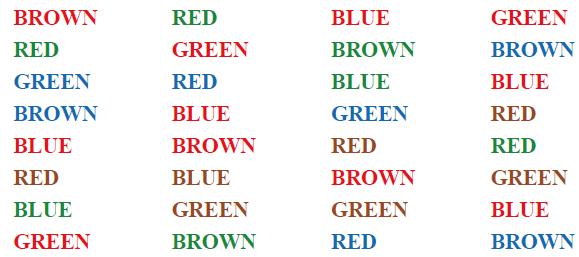Can we use a students word task time to predict his or her color task time? a.
Question:
Can we use a student’s word task time to predict his or her color task time?
a. Make an appropriate scatterplot to help answer this question. Describe what you see.
b. Use technology to find the equation of the least-squares regression line. Define any variables you use.
c. Find and interpret the residual for the student who completed the word task in 9 seconds.
d. Assume that the conditions for performing inference about the slope of the true regression line are met. The P -value for a test of H0: β1 = 0 versus Ha: β1 > 0 is 0.0215. Interpret this value.
John Ridley Stroop is often credited with the discovery in 1935 of the fact that the color in which “color words” are printed interferes with people’s ability to identify the color. The paper outlining the so called Stroop effect, though, was originally published by German researchers in 1929.
Does the color in which words are printed affect your ability to read them? Do the words themselves affect your ability to name the color in which they are printed? Mr. Starnes designed a study to investigate these questions using the 16 students in his AP® Statistics class as subjects. Each student performed the following two tasks in random order while a partner timed his or her performance: (1) Read 32 words aloud as quickly as possible, and (2) say the color in which each of 32 words is printed as quickly as possible. Try both tasks for yourself using the word list given.

Step by Step Answer:






